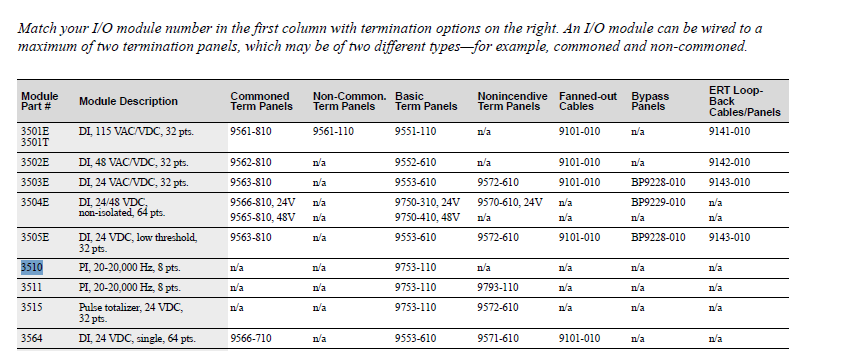Invensys Triconex 3510 Pulse Input Module
Description
| Manufacture | Invensys Triconex |
| Model | 3510 |
| Ordering information | 3510 |
| Catalog | Tricon |
| Description | Invensys Triconex 3510 Pulse Input Module |
| Origin | United States (US) |
| HS Code | 85389091 |
| Dimension | 16cm*16cm*12cm |
| Weight | 0.8kg |
Details
Pulse Input Module
The pulse input (PI) module provides eight very sensitive, high-frequency
inputs. It is optimized for use with nonamplified magnetic speed sensors
common on rotating equipment such as turbines or compressors. The module
senses voltage transitions from magnetic transducer input devices,
accumulating them during a selected window of time (rate measurement).
The resulting count is used to generate a frequency or RPM which is transmitted
to the main processors. The pulse count is measured to 1 microsecond resolution.
The PI module includes three isolated input channels. Each input channel
independently processes all data input to the module and passes the data to the
main processors, which vote on the data to ensure the highest integrity.
Each module provides complete ongoing diagnostics on each channel.
Failure of any diagnostic on any channel activates the Fault indicator,
which in turn activates the chassis alarm signal. The Fault indicator
merely indicates a channel fault, not a module failure. The module is guaranteed
to operate properly in the presence of a single fault and may continue to operate properly with certain kinds of multiple faults.
The pulse input module supports hotspare modules.
WARNING: The PI module does not provide a totalization capability—it is
optimized for measuring the speed of rotation equipment. For pulse totalization
model 3515, see page 36.
Relay Output Module The model 3636R/T Relay Output (RO)
Module is a non-triplicated module for use on non-critical points which are not
compatible with “high-side” solid-state output switches. An example is interfacing
with annunciator panels. The relay output module receives output signals from the main processors on
each of three channels. The three sets of signals are then voted, and the voted
data is used to drive the 32 individual relays.
Each output has a loopback circuit which verifies the operation of each
relay switch independently of the presence of a load, while ongoing diagnostics
test the operational status of the module. Failure of any diagnostic activates
the Fault indicator, which in turn activates the chassis alarm.
The relay output module comes with normally open (NO) contacts. It
supports hot-spare modules and requires a separate external termination
panel (ETP) with a cable interface to the Tricon backplane.















